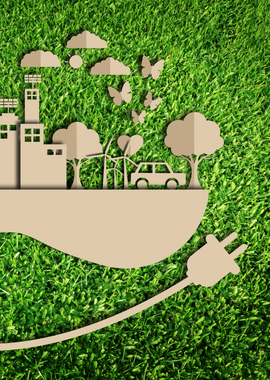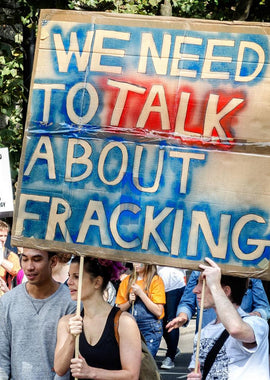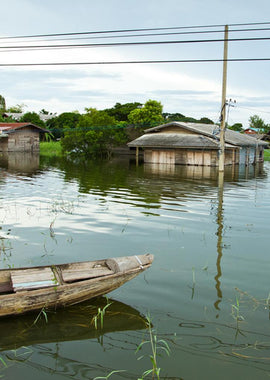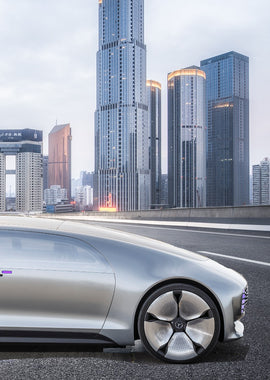Climate change
Countries have ambitious targets to limit the warming, and clean energy and the transition to electric transport are happening. But is it too little too late? Make science real with one of our climate change activities!
News
Summer 2023 was the hottest on record
Scientists say the average global temperature was 0.66C above the average, and Europe shows warming twice any other continent. Read more
Extreme weather
Sea temperatures are higher than ever, and Antarctic sea ice is thinner than ever. We used to say you couldn't blame climate change for a single event, but when so many happen at once, there is really no other explanation - especially because the models predicted more extremes. Read more
Activities
- Grid List
{"id":6605350109255,"title":"Carbon footprint: Thinking Classroom version","handle":"carbon-neutral","description":"\u003ch5\u003eShort description\u003c\/h5\u003e\n\u003cp\u003eAt COP28 in Dubai, discussions once again turned to how to protect the planet from the worst effects of climate change. There are plenty of actions that individuals can take to reduce our carbon footprint and help the world reach its climate goals, but how can we choose the best one?\u003c\/p\u003e\n\u003cp\u003eIn this activity, students learn how to explore the consequences of different actions in order to make a scientific decision.\u003cbr\u003e\u003c\/p\u003e\n\u003cp\u003eThe new version integrates practices from Peter Liljedahl's \u003ca href=\"https:\/\/www.amazon.co.uk\/Building-Thinking-Classrooms-Mathematics-Grades-ebook\/dp\/B08L3Y5J1V\/ref=tmm_kin_swatch_0?_encoding=UTF8\u0026amp;qid=1701953392\u0026amp;sr=8-1\" target=\"_blank\"\u003eThinking Classroom\u003c\/a\u003e, with a 3-part structure to support student thinking in collaborative groups:\u003c\/p\u003e\n\u003cul\u003e\n\u003cli\u003eCARE: Students are introduced to the issue and posed a question\u003c\/li\u003e\n\u003cli\u003eKNOW: Students review the prior knowledge they will need to complete the task\u003c\/li\u003e\n\u003cli\u003eDO: Students work in groups to analyse data that they can use as evidence\u003c\/li\u003e\n\u003c\/ul\u003e\n\u003cp\u003e\u003cstrong\u003eCurriculum link\u003c\/strong\u003e\u003cbr\u003e\u003c\/p\u003e\n\u003cul\u003e\n\u003cli\u003eConcepts: Earth's atmosphere, \u003cmeta charset=\"utf-8\"\u003eGlobal warming\u003c\/li\u003e\n\u003cli\u003eSkill: Consider different perspectives\u003c\/li\u003e\n\u003c\/ul\u003e\n\u003ch5\u003eWeblinks\u003c\/h5\u003e\n\u003cp\u003e\u003ciframe style=\"border: 0; width: 100%; height: 450px;\" src=\"https:\/\/raindrop.io\/MasteryScience\/carbon-neutral-34092577\/embed\" allowfullscreen=\"\" frameborder=\"0\"\u003e\u003c\/iframe\u003e\u003c\/p\u003e\n\u003cp\u003e \u003cmeta charset=\"utf-8\"\u003e\u003c\/p\u003e\n\u003ch5\u003eCONNECT\u003c\/h5\u003e\n\u003cdiv style=\"text-align: start;\" data-mce-style=\"text-align: start;\"\u003e\u003cimg src=\"https:\/\/cdn.shopify.com\/s\/files\/1\/2211\/3953\/files\/logo_100x100.png?v=1636041997\" alt=\"\" style=\"float: none;\" data-mce-style=\"float: none;\"\u003e\u003c\/div\u003e\n\u003cp\u003eCarbon Neutral is a resource developed for the \u003ca href=\"https:\/\/www.connect-science.net\/\" target=\"_blank\"\u003eCONNECT project\u003c\/a\u003e, funded by the European Commission.\u003c\/p\u003e","published_at":"2021-11-09T14:24:06+00:00","created_at":"2021-11-04T09:56:43+00:00","vendor":"Mastery Science","type":"Activity","tags":["Blueprint unit_Y10 atmosphere","Learning stage_Analyse","Learning stage_Apply","New","Project: CONNECT","Science skill_Decisions","Year_Year 10"],"price":0,"price_min":0,"price_max":0,"available":true,"price_varies":false,"compare_at_price":null,"compare_at_price_min":0,"compare_at_price_max":0,"compare_at_price_varies":false,"variants":[{"id":39520827572295,"title":"Default Title","option1":"Default Title","option2":null,"option3":null,"sku":"","requires_shipping":false,"taxable":false,"featured_image":null,"available":true,"name":"Carbon footprint: Thinking Classroom version","public_title":null,"options":["Default Title"],"price":0,"weight":0,"compare_at_price":null,"inventory_quantity":-262,"inventory_management":null,"inventory_policy":"deny","barcode":"","requires_selling_plan":false,"selling_plan_allocations":[]}],"images":["\/\/shop.masteryscience.com\/cdn\/shop\/files\/carbonwebsiteimage.jpg?v=1701969426","\/\/shop.masteryscience.com\/cdn\/shop\/products\/CNimage2.png?v=1701969426","\/\/shop.masteryscience.com\/cdn\/shop\/products\/CNimage3.png?v=1701969426"],"featured_image":"\/\/shop.masteryscience.com\/cdn\/shop\/files\/carbonwebsiteimage.jpg?v=1701969426","options":["Title"],"media":[{"alt":null,"id":21950600347719,"position":1,"preview_image":{"aspect_ratio":0.71,"height":1020,"width":724,"src":"\/\/shop.masteryscience.com\/cdn\/shop\/files\/carbonwebsiteimage.jpg?v=1701969426"},"aspect_ratio":0.71,"height":1020,"media_type":"image","src":"\/\/shop.masteryscience.com\/cdn\/shop\/files\/carbonwebsiteimage.jpg?v=1701969426","width":724},{"alt":null,"id":20747323736135,"position":2,"preview_image":{"aspect_ratio":1.45,"height":738,"width":1070,"src":"\/\/shop.masteryscience.com\/cdn\/shop\/products\/CNimage2.png?v=1701969426"},"aspect_ratio":1.45,"height":738,"media_type":"image","src":"\/\/shop.masteryscience.com\/cdn\/shop\/products\/CNimage2.png?v=1701969426","width":1070},{"alt":null,"id":20747323768903,"position":3,"preview_image":{"aspect_ratio":1.35,"height":717,"width":968,"src":"\/\/shop.masteryscience.com\/cdn\/shop\/products\/CNimage3.png?v=1701969426"},"aspect_ratio":1.35,"height":717,"media_type":"image","src":"\/\/shop.masteryscience.com\/cdn\/shop\/products\/CNimage3.png?v=1701969426","width":968}],"requires_selling_plan":false,"selling_plan_groups":[],"content":"\u003ch5\u003eShort description\u003c\/h5\u003e\n\u003cp\u003eAt COP28 in Dubai, discussions once again turned to how to protect the planet from the worst effects of climate change. There are plenty of actions that individuals can take to reduce our carbon footprint and help the world reach its climate goals, but how can we choose the best one?\u003c\/p\u003e\n\u003cp\u003eIn this activity, students learn how to explore the consequences of different actions in order to make a scientific decision.\u003cbr\u003e\u003c\/p\u003e\n\u003cp\u003eThe new version integrates practices from Peter Liljedahl's \u003ca href=\"https:\/\/www.amazon.co.uk\/Building-Thinking-Classrooms-Mathematics-Grades-ebook\/dp\/B08L3Y5J1V\/ref=tmm_kin_swatch_0?_encoding=UTF8\u0026amp;qid=1701953392\u0026amp;sr=8-1\" target=\"_blank\"\u003eThinking Classroom\u003c\/a\u003e, with a 3-part structure to support student thinking in collaborative groups:\u003c\/p\u003e\n\u003cul\u003e\n\u003cli\u003eCARE: Students are introduced to the issue and posed a question\u003c\/li\u003e\n\u003cli\u003eKNOW: Students review the prior knowledge they will need to complete the task\u003c\/li\u003e\n\u003cli\u003eDO: Students work in groups to analyse data that they can use as evidence\u003c\/li\u003e\n\u003c\/ul\u003e\n\u003cp\u003e\u003cstrong\u003eCurriculum link\u003c\/strong\u003e\u003cbr\u003e\u003c\/p\u003e\n\u003cul\u003e\n\u003cli\u003eConcepts: Earth's atmosphere, \u003cmeta charset=\"utf-8\"\u003eGlobal warming\u003c\/li\u003e\n\u003cli\u003eSkill: Consider different perspectives\u003c\/li\u003e\n\u003c\/ul\u003e\n\u003ch5\u003eWeblinks\u003c\/h5\u003e\n\u003cp\u003e\u003ciframe style=\"border: 0; width: 100%; height: 450px;\" src=\"https:\/\/raindrop.io\/MasteryScience\/carbon-neutral-34092577\/embed\" allowfullscreen=\"\" frameborder=\"0\"\u003e\u003c\/iframe\u003e\u003c\/p\u003e\n\u003cp\u003e \u003cmeta charset=\"utf-8\"\u003e\u003c\/p\u003e\n\u003ch5\u003eCONNECT\u003c\/h5\u003e\n\u003cdiv style=\"text-align: start;\" data-mce-style=\"text-align: start;\"\u003e\u003cimg src=\"https:\/\/cdn.shopify.com\/s\/files\/1\/2211\/3953\/files\/logo_100x100.png?v=1636041997\" alt=\"\" style=\"float: none;\" data-mce-style=\"float: none;\"\u003e\u003c\/div\u003e\n\u003cp\u003eCarbon Neutral is a resource developed for the \u003ca href=\"https:\/\/www.connect-science.net\/\" target=\"_blank\"\u003eCONNECT project\u003c\/a\u003e, funded by the European Commission.\u003c\/p\u003e"}
You may also like:
Carbon footprint: Thinking Classroom version
1 review
£0.00
Short description At COP28 in Dubai, discussions once again turned to how to protect the planet from the worst effects...
{"id":6638312161351,"title":"Energy savers","handle":"energy-savers","description":"\u003ch5\u003eDescription\u003c\/h5\u003e\n\u003cp\u003eElon Musk's company Tesla invent electric cars to reduce our fossil fuel emissions from transport. Other companies invent devices to reduce energy consumption at home. The challenge for all inventors is to raise money from investors.\u003c\/p\u003e\n\u003cp\u003eThis is the context for 'Energy savers'. Students \u003cmeta charset=\"utf-8\"\u003euse their knowledge of energy transfers and wasted energy to help an inventor design an energy-saving device, and write the crowd-funding webpage.\u003c\/p\u003e\n\u003cp\u003eEnergy savers can be done in 1-2 lessons, to practice higher-order thinking and prepare students for the demands of 'AO3' at GCSE.\u003c\/p\u003e\n\u003cp\u003e\u003cem\u003eBlueprint curriculum links\u003c\/em\u003e\u003c\/p\u003e\n\u003cul\u003e\n\u003cli\u003eConcepts: Energy transfers, Wasted energy\u003c\/li\u003e\n\u003cli\u003eSkill: \u003cspan data-mce-fragment=\"1\"\u003eRepresent with models, Use fractions and percentages.\u003c\/span\u003e\n\u003c\/li\u003e\n\u003cli\u003eLearning stage: Analyse\u003c\/li\u003e\n\u003c\/ul\u003e\n\u003cul\u003e\u003c\/ul\u003e\n\u003cp\u003eThe lesson resources are delivered as a zip file. After you checkout, you will be sent an email with the link to download them.\u003c\/p\u003e\n\u003cp\u003e\u003cem\u003eWork with a scientist\u003c\/em\u003e\u003c\/p\u003e\n\u003cp\u003eThis activity is ideal for use with a scientist in the classroom, or online. We can help you set up a partnership - just complete the form\u003cspan\u003e (only open to UK schools).\u003c\/span\u003e\u003c\/p\u003e\n\u003cp\u003e\u003ca href=\"https:\/\/form.jotform.com\/221393236441451\" target=\"_blank\"\u003e\u003cspan style=\"text-decoration: underline;\"\u003eRequest a scientist\u003c\/span\u003e\u003c\/a\u003e\u003c\/p\u003e\n\u003cp\u003e\u003cbr\u003e\u003c\/p\u003e\n\u003cdiv style=\"text-align: start;\"\u003e\u003cimg style=\"float: none;\" src=\"https:\/\/cdn.shopify.com\/s\/files\/1\/2211\/3953\/files\/logo_100x100.png?v=1636041997\" alt=\"\" data-mce-src=\"https:\/\/cdn.shopify.com\/s\/files\/1\/2211\/3953\/files\/logo_100x100.png?v=1636041997\"\u003e\u003c\/div\u003e\n\u003cp\u003eEnergy savers is a resource developed for the\u003cspan\u003e \u003c\/span\u003e\u003ca href=\"https:\/\/www.connect-science.net\/\" target=\"_blank\" data-mce-href=\"https:\/\/www.connect-science.net\/\"\u003eCONNECT project\u003c\/a\u003e.\u003c\/p\u003e","published_at":"2022-05-19T22:19:07+01:00","created_at":"2022-03-14T11:47:39+00:00","vendor":"Mastery Science","type":"Activity","tags":["Big Idea_Energy","Learning stage_Analyse","New","Project: CONNECT","Year 7","Year_Year 7"],"price":0,"price_min":0,"price_max":0,"available":true,"price_varies":false,"compare_at_price":null,"compare_at_price_min":0,"compare_at_price_max":0,"compare_at_price_varies":false,"variants":[{"id":39620502224967,"title":"Default Title","option1":"Default Title","option2":null,"option3":null,"sku":"","requires_shipping":false,"taxable":false,"featured_image":null,"available":true,"name":"Energy savers","public_title":null,"options":["Default Title"],"price":0,"weight":0,"compare_at_price":null,"inventory_quantity":-156,"inventory_management":null,"inventory_policy":"deny","barcode":"","requires_selling_plan":false,"selling_plan_allocations":[]}],"images":["\/\/shop.masteryscience.com\/cdn\/shop\/products\/website_81439930-84e0-47ab-91a2-0fd11092e893.png?v=1647260876","\/\/shop.masteryscience.com\/cdn\/shop\/products\/energy1.png?v=1647262071","\/\/shop.masteryscience.com\/cdn\/shop\/products\/energy2.png?v=1647262071"],"featured_image":"\/\/shop.masteryscience.com\/cdn\/shop\/products\/website_81439930-84e0-47ab-91a2-0fd11092e893.png?v=1647260876","options":["Title"],"media":[{"alt":null,"id":20941947666503,"position":1,"preview_image":{"aspect_ratio":0.71,"height":1020,"width":724,"src":"\/\/shop.masteryscience.com\/cdn\/shop\/products\/website_81439930-84e0-47ab-91a2-0fd11092e893.png?v=1647260876"},"aspect_ratio":0.71,"height":1020,"media_type":"image","src":"\/\/shop.masteryscience.com\/cdn\/shop\/products\/website_81439930-84e0-47ab-91a2-0fd11092e893.png?v=1647260876","width":724},{"alt":null,"id":20941963067463,"position":2,"preview_image":{"aspect_ratio":1.771,"height":719,"width":1273,"src":"\/\/shop.masteryscience.com\/cdn\/shop\/products\/energy1.png?v=1647262071"},"aspect_ratio":1.771,"height":719,"media_type":"image","src":"\/\/shop.masteryscience.com\/cdn\/shop\/products\/energy1.png?v=1647262071","width":1273},{"alt":null,"id":20941963034695,"position":3,"preview_image":{"aspect_ratio":1.411,"height":713,"width":1006,"src":"\/\/shop.masteryscience.com\/cdn\/shop\/products\/energy2.png?v=1647262071"},"aspect_ratio":1.411,"height":713,"media_type":"image","src":"\/\/shop.masteryscience.com\/cdn\/shop\/products\/energy2.png?v=1647262071","width":1006}],"requires_selling_plan":false,"selling_plan_groups":[],"content":"\u003ch5\u003eDescription\u003c\/h5\u003e\n\u003cp\u003eElon Musk's company Tesla invent electric cars to reduce our fossil fuel emissions from transport. Other companies invent devices to reduce energy consumption at home. The challenge for all inventors is to raise money from investors.\u003c\/p\u003e\n\u003cp\u003eThis is the context for 'Energy savers'. Students \u003cmeta charset=\"utf-8\"\u003euse their knowledge of energy transfers and wasted energy to help an inventor design an energy-saving device, and write the crowd-funding webpage.\u003c\/p\u003e\n\u003cp\u003eEnergy savers can be done in 1-2 lessons, to practice higher-order thinking and prepare students for the demands of 'AO3' at GCSE.\u003c\/p\u003e\n\u003cp\u003e\u003cem\u003eBlueprint curriculum links\u003c\/em\u003e\u003c\/p\u003e\n\u003cul\u003e\n\u003cli\u003eConcepts: Energy transfers, Wasted energy\u003c\/li\u003e\n\u003cli\u003eSkill: \u003cspan data-mce-fragment=\"1\"\u003eRepresent with models, Use fractions and percentages.\u003c\/span\u003e\n\u003c\/li\u003e\n\u003cli\u003eLearning stage: Analyse\u003c\/li\u003e\n\u003c\/ul\u003e\n\u003cul\u003e\u003c\/ul\u003e\n\u003cp\u003eThe lesson resources are delivered as a zip file. After you checkout, you will be sent an email with the link to download them.\u003c\/p\u003e\n\u003cp\u003e\u003cem\u003eWork with a scientist\u003c\/em\u003e\u003c\/p\u003e\n\u003cp\u003eThis activity is ideal for use with a scientist in the classroom, or online. We can help you set up a partnership - just complete the form\u003cspan\u003e (only open to UK schools).\u003c\/span\u003e\u003c\/p\u003e\n\u003cp\u003e\u003ca href=\"https:\/\/form.jotform.com\/221393236441451\" target=\"_blank\"\u003e\u003cspan style=\"text-decoration: underline;\"\u003eRequest a scientist\u003c\/span\u003e\u003c\/a\u003e\u003c\/p\u003e\n\u003cp\u003e\u003cbr\u003e\u003c\/p\u003e\n\u003cdiv style=\"text-align: start;\"\u003e\u003cimg style=\"float: none;\" src=\"https:\/\/cdn.shopify.com\/s\/files\/1\/2211\/3953\/files\/logo_100x100.png?v=1636041997\" alt=\"\" data-mce-src=\"https:\/\/cdn.shopify.com\/s\/files\/1\/2211\/3953\/files\/logo_100x100.png?v=1636041997\"\u003e\u003c\/div\u003e\n\u003cp\u003eEnergy savers is a resource developed for the\u003cspan\u003e \u003c\/span\u003e\u003ca href=\"https:\/\/www.connect-science.net\/\" target=\"_blank\" data-mce-href=\"https:\/\/www.connect-science.net\/\"\u003eCONNECT project\u003c\/a\u003e.\u003c\/p\u003e"}
You may also like:
Energy savers
1 review
£0.00
Description Elon Musk's company Tesla invent electric cars to reduce our fossil fuel emissions from transport. Other companies invent devices...
{"id":1300401324103,"title":"To frack or not","handle":"to-frack-or-not","description":"\u003ch5\u003e\u003cspan\u003e\u003cstrong\u003eShort description\u003c\/strong\u003e\u003c\/span\u003e\u003c\/h5\u003e\n\u003cmeta charset=\"utf-8\"\u003e\u003cmeta charset=\"utf-8\"\u003e\n\u003cp\u003e\u003cspan\u003eThe extraction of gas from shale rock – hydraulic fracturing, or fracking – is widespread in the USA. Whilst some countries in Europe have banned fracking following concerns that substances used in the process pollute water, others want to exploit shale gas reserves to provide new – and cheap – sources of natural gas. In this activity, students decide whether they support a ban on fracking. They apply their knowledge of the properties of rocks to decide whether substances from fracking can get into water, and learn how to justify opinions.\u003c\/span\u003e\u003c\/p\u003e\n\u003ciframe src=\"\/\/www.slideshare.net\/slideshow\/embed_code\/key\/4yYvTgmUkJGt2M\" width=\"595\" height=\"485\" frameborder=\"0\" marginwidth=\"0\" marginheight=\"0\" scrolling=\"no\" style=\"border: 1px solid #CCC; border-width: 1px; margin-bottom: 5px; max-width: 100%;\" allowfullscreen=\"\"\u003e \u003c\/iframe\u003e\n\u003cp\u003e\u003cem\u003eLearning\u003cspan\u003e \u003c\/span\u003eobjective\u003c\/em\u003e\u003c\/p\u003e\n\u003cmeta charset=\"utf-8\"\u003e\u003cmeta charset=\"utf-8\"\u003e\n\u003cul\u003e\n\u003cli\u003e\u003cspan\u003eExplain why a rock has a particular property based on how it was formed\u003c\/span\u003e\u003c\/li\u003e\n\u003cli\u003e\u003cspan\u003eGive opinions, present evidence to support their opinions, and explain their reasoning\u003c\/span\u003e\u003c\/li\u003e\n\u003c\/ul\u003e\n\u003cp\u003e\u003cem\u003eBlueprint curriculum link\u003c\/em\u003e\u003c\/p\u003e\n\u003cp\u003eLesson 1\u003c\/p\u003e\n\u003cul\u003e\n\u003cli\u003eUnit: Earth systems\u003c\/li\u003e\n\u003cli\u003eConcept: Rock cycle: The three type of rock that make up the Earth's crust were formed by processes that link together in a never ending cycle\u003c\/li\u003e\n\u003cli\u003eLearning stage: Apply\u003c\/li\u003e\n\u003c\/ul\u003e\n\u003cp\u003eLesson 2\u003c\/p\u003e\n\u003cul\u003e\n\u003cli\u003eSkills: Explanations: Argue for a claim with data and reasons\u003c\/li\u003e\n\u003cli\u003eLearning stage: Analyse\u003c\/li\u003e\n\u003c\/ul\u003e\n\u003cp\u003e\u003cem\u003eActivity contents\u003c\/em\u003e\u003c\/p\u003e\n\u003cul\u003e\n\u003cli\u003eTeachers guide\u003c\/li\u003e\n\u003cli\u003eTwo powerpoint presentations (lesson 1 and 2)\u003c\/li\u003e\n\u003c\/ul\u003e\n\u003cp\u003eThese lessons are delivered as a zip file. After you checkout, you will be sent an email with the link to download them.\u003c\/p\u003e\n\u003ch3\u003e\u003c\/h3\u003e\n\u003ch4\u003eWeblinks\u003c\/h4\u003e\n\u003cmeta charset=\"utf-8\"\u003e\u003cmeta charset=\"utf-8\"\u003e\n\u003cp\u003e\u003ca href=\"https:\/\/www.youtube.com\/watch?v=Uti2niW2BRA\"\u003eFracking video 1\u003c\/a\u003e\u003c\/p\u003e\n\u003cp\u003eA neutral view of fracking, explained in 5 minutes\u003c\/p\u003e\n\u003cp\u003e\u003ca href=\"https:\/\/www.youtube.com\/watch?v=VY34PQUiwOQ\"\u003eFracking video 2\u003c\/a\u003e\u003c\/p\u003e\n\u003cp\u003eExplanation of fracking from a fracking company\u003c\/p\u003e\n\u003cp\u003e\u003ca href=\"http:\/\/frack-off.org.uk\/fracking-hell\/watch-the-film\/\"\u003eFracking video 3\u003c\/a\u003e\u003c\/p\u003e\n\u003cp\u003eSeveral videos against fracking from a campaigning organisation\u003c\/p\u003e\n\u003cp\u003e\u003ca href=\"http:\/\/www.dw.com\/en\/what-ever-happened-with-europes-fracking-boom\/a-18589660\"\u003eFracking in Europe\u003c\/a\u003e\u003c\/p\u003e\n\u003cp\u003eThis article from Deutsche Welle summarises the current state of play for fracking in European countries, and includes a useful map.\u003c\/p\u003e\n\u003cp\u003e\u003ca href=\"http:\/\/www.independent.co.uk\/environment\/fracking-poses-significant-risk-to-humans-and-should-be-temporarily-banned-across-eu-says-new-report-10334080.html\"\u003eNewspaper article about EU fracking report\u003c\/a\u003e\u003c\/p\u003e\n\u003cp\u003eThis article reports on a recent EU report on fracking.\u003c\/p\u003e\n\u003cp\u003e\u003ca href=\"http:\/\/www.theguardian.com\/commentisfree\/2015\/aug\/19\/why-is-fracking-bad-google-answer\"\u003eNewspaper report in answer to the question ‘why is fracking bad?’\u003c\/a\u003e\u003c\/p\u003e\n\u003cp\u003eA clear and relatively balanced report on fracking\u003c\/p\u003e\n\u003cp\u003e\u003ca href=\"http:\/\/insideclimatenews.org\/news\/05062015\/fracking-has-contaminated-drinking-water-epa-now-concludes\"\u003eFracking and drinking water in the USA\u003c\/a\u003e\u003c\/p\u003e\n\u003cp\u003eA report about contaminated drinking water in the USA\u003c\/p\u003e\n\u003cp\u003e\u003ca href=\"http:\/\/www.chemtrust.org.uk\/wp-content\/uploads\/chemtrust-chemical-pollution-from-fracking-june2015.pdf\"\u003ePollutants from fracking\u003c\/a\u003e\u003c\/p\u003e\n\u003cp\u003eThis long and detailed article describes pollutants from substances used in fracking, written from a particular perspective.\u003c\/p\u003e\n\u003cp\u003e \u003c\/p\u003e","published_at":"2019-03-27T13:42:44+00:00","created_at":"2018-05-27T22:01:27+01:00","vendor":"Mastery Science","type":"Activity","tags":["Learning stage_Analyse","Learning stage_Apply","Project: Engage","Science skill_Explanations","Skills: Explanations","Y8 Earth systems","Year_Year 8"],"price":0,"price_min":0,"price_max":0,"available":true,"price_varies":false,"compare_at_price":null,"compare_at_price_min":0,"compare_at_price_max":0,"compare_at_price_varies":false,"variants":[{"id":12181146370119,"title":"Default Title","option1":"Default Title","option2":null,"option3":null,"sku":"","requires_shipping":false,"taxable":false,"featured_image":null,"available":true,"name":"To frack or not","public_title":null,"options":["Default Title"],"price":0,"weight":0,"compare_at_price":null,"inventory_quantity":-143,"inventory_management":null,"inventory_policy":"deny","barcode":"","requires_selling_plan":false,"selling_plan_allocations":[]}],"images":["\/\/shop.masteryscience.com\/cdn\/shop\/products\/fracking_image.jpg?v=1527746433"],"featured_image":"\/\/shop.masteryscience.com\/cdn\/shop\/products\/fracking_image.jpg?v=1527746433","options":["Title"],"media":[{"alt":null,"id":626434834503,"position":1,"preview_image":{"aspect_ratio":0.71,"height":1020,"width":724,"src":"\/\/shop.masteryscience.com\/cdn\/shop\/products\/fracking_image.jpg?v=1527746433"},"aspect_ratio":0.71,"height":1020,"media_type":"image","src":"\/\/shop.masteryscience.com\/cdn\/shop\/products\/fracking_image.jpg?v=1527746433","width":724}],"requires_selling_plan":false,"selling_plan_groups":[],"content":"\u003ch5\u003e\u003cspan\u003e\u003cstrong\u003eShort description\u003c\/strong\u003e\u003c\/span\u003e\u003c\/h5\u003e\n\u003cmeta charset=\"utf-8\"\u003e\u003cmeta charset=\"utf-8\"\u003e\n\u003cp\u003e\u003cspan\u003eThe extraction of gas from shale rock – hydraulic fracturing, or fracking – is widespread in the USA. Whilst some countries in Europe have banned fracking following concerns that substances used in the process pollute water, others want to exploit shale gas reserves to provide new – and cheap – sources of natural gas. In this activity, students decide whether they support a ban on fracking. They apply their knowledge of the properties of rocks to decide whether substances from fracking can get into water, and learn how to justify opinions.\u003c\/span\u003e\u003c\/p\u003e\n\u003ciframe src=\"\/\/www.slideshare.net\/slideshow\/embed_code\/key\/4yYvTgmUkJGt2M\" width=\"595\" height=\"485\" frameborder=\"0\" marginwidth=\"0\" marginheight=\"0\" scrolling=\"no\" style=\"border: 1px solid #CCC; border-width: 1px; margin-bottom: 5px; max-width: 100%;\" allowfullscreen=\"\"\u003e \u003c\/iframe\u003e\n\u003cp\u003e\u003cem\u003eLearning\u003cspan\u003e \u003c\/span\u003eobjective\u003c\/em\u003e\u003c\/p\u003e\n\u003cmeta charset=\"utf-8\"\u003e\u003cmeta charset=\"utf-8\"\u003e\n\u003cul\u003e\n\u003cli\u003e\u003cspan\u003eExplain why a rock has a particular property based on how it was formed\u003c\/span\u003e\u003c\/li\u003e\n\u003cli\u003e\u003cspan\u003eGive opinions, present evidence to support their opinions, and explain their reasoning\u003c\/span\u003e\u003c\/li\u003e\n\u003c\/ul\u003e\n\u003cp\u003e\u003cem\u003eBlueprint curriculum link\u003c\/em\u003e\u003c\/p\u003e\n\u003cp\u003eLesson 1\u003c\/p\u003e\n\u003cul\u003e\n\u003cli\u003eUnit: Earth systems\u003c\/li\u003e\n\u003cli\u003eConcept: Rock cycle: The three type of rock that make up the Earth's crust were formed by processes that link together in a never ending cycle\u003c\/li\u003e\n\u003cli\u003eLearning stage: Apply\u003c\/li\u003e\n\u003c\/ul\u003e\n\u003cp\u003eLesson 2\u003c\/p\u003e\n\u003cul\u003e\n\u003cli\u003eSkills: Explanations: Argue for a claim with data and reasons\u003c\/li\u003e\n\u003cli\u003eLearning stage: Analyse\u003c\/li\u003e\n\u003c\/ul\u003e\n\u003cp\u003e\u003cem\u003eActivity contents\u003c\/em\u003e\u003c\/p\u003e\n\u003cul\u003e\n\u003cli\u003eTeachers guide\u003c\/li\u003e\n\u003cli\u003eTwo powerpoint presentations (lesson 1 and 2)\u003c\/li\u003e\n\u003c\/ul\u003e\n\u003cp\u003eThese lessons are delivered as a zip file. After you checkout, you will be sent an email with the link to download them.\u003c\/p\u003e\n\u003ch3\u003e\u003c\/h3\u003e\n\u003ch4\u003eWeblinks\u003c\/h4\u003e\n\u003cmeta charset=\"utf-8\"\u003e\u003cmeta charset=\"utf-8\"\u003e\n\u003cp\u003e\u003ca href=\"https:\/\/www.youtube.com\/watch?v=Uti2niW2BRA\"\u003eFracking video 1\u003c\/a\u003e\u003c\/p\u003e\n\u003cp\u003eA neutral view of fracking, explained in 5 minutes\u003c\/p\u003e\n\u003cp\u003e\u003ca href=\"https:\/\/www.youtube.com\/watch?v=VY34PQUiwOQ\"\u003eFracking video 2\u003c\/a\u003e\u003c\/p\u003e\n\u003cp\u003eExplanation of fracking from a fracking company\u003c\/p\u003e\n\u003cp\u003e\u003ca href=\"http:\/\/frack-off.org.uk\/fracking-hell\/watch-the-film\/\"\u003eFracking video 3\u003c\/a\u003e\u003c\/p\u003e\n\u003cp\u003eSeveral videos against fracking from a campaigning organisation\u003c\/p\u003e\n\u003cp\u003e\u003ca href=\"http:\/\/www.dw.com\/en\/what-ever-happened-with-europes-fracking-boom\/a-18589660\"\u003eFracking in Europe\u003c\/a\u003e\u003c\/p\u003e\n\u003cp\u003eThis article from Deutsche Welle summarises the current state of play for fracking in European countries, and includes a useful map.\u003c\/p\u003e\n\u003cp\u003e\u003ca href=\"http:\/\/www.independent.co.uk\/environment\/fracking-poses-significant-risk-to-humans-and-should-be-temporarily-banned-across-eu-says-new-report-10334080.html\"\u003eNewspaper article about EU fracking report\u003c\/a\u003e\u003c\/p\u003e\n\u003cp\u003eThis article reports on a recent EU report on fracking.\u003c\/p\u003e\n\u003cp\u003e\u003ca href=\"http:\/\/www.theguardian.com\/commentisfree\/2015\/aug\/19\/why-is-fracking-bad-google-answer\"\u003eNewspaper report in answer to the question ‘why is fracking bad?’\u003c\/a\u003e\u003c\/p\u003e\n\u003cp\u003eA clear and relatively balanced report on fracking\u003c\/p\u003e\n\u003cp\u003e\u003ca href=\"http:\/\/insideclimatenews.org\/news\/05062015\/fracking-has-contaminated-drinking-water-epa-now-concludes\"\u003eFracking and drinking water in the USA\u003c\/a\u003e\u003c\/p\u003e\n\u003cp\u003eA report about contaminated drinking water in the USA\u003c\/p\u003e\n\u003cp\u003e\u003ca href=\"http:\/\/www.chemtrust.org.uk\/wp-content\/uploads\/chemtrust-chemical-pollution-from-fracking-june2015.pdf\"\u003ePollutants from fracking\u003c\/a\u003e\u003c\/p\u003e\n\u003cp\u003eThis long and detailed article describes pollutants from substances used in fracking, written from a particular perspective.\u003c\/p\u003e\n\u003cp\u003e \u003c\/p\u003e"}
You may also like:
To frack or not
No reviews
£0.00
Short description The extraction of gas from shale rock – hydraulic fracturing, or fracking – is widespread in the USA....
{"id":6769410539591,"title":"Sinking Islands","handle":"sinking-islands","description":"\u003ch5\u003eDescription\u003c\/h5\u003e\n\u003cp\u003eThe low-lying Pacific nation of Kiribati could be the first country to disappear because of climate change. Rising sea levels due to climate change have already claimed two of the islands with the rest threatened. The President has recently revealed a new idea – to raise up the islands using rocks from the seabed, an ambitious plan that will take time. In this short activity, students plot a line graph by calculating uncertainties to find out just how long Kiribati has left. \u003c\/p\u003e\n\u003cp\u003e\u003cmeta charset=\"utf-8\"\u003e\u003cem data-mce-fragment=\"1\"\u003eBlueprint curriculum link\u003c\/em\u003e\u003c\/p\u003e\n\u003cul\u003e\n\u003cli\u003eAtmosphere: Global warming\u003c\/li\u003e\n\u003cli\u003eSkill: Consider different perspectives\u003c\/li\u003e\n\u003c\/ul\u003e\n\u003cp\u003e\u003cem\u003eActivity contents\u003c\/em\u003e\u003c\/p\u003e\n\u003cul\u003e\n\u003cli\u003eTeachers guide\u003c\/li\u003e\n\u003cli\u003ePDF file\u003c\/li\u003e\n\u003c\/ul\u003e\n\u003cp\u003eThe activity is delivered as a zip file. After you checkout, you will be sent an email with the link to download it.\u003cstrong\u003e\u003cspan style=\"color: #ff2a00;\"\u003e \u003c\/span\u003e \u003c\/strong\u003e\u003c\/p\u003e\n\u003cp\u003e \u003c\/p\u003e\n\u003ch5\u003e\u003cstrong\u003eRunning Notes\u003c\/strong\u003e\u003c\/h5\u003e\n\u003cp\u003e\u003cstrong\u003eSlide 2: \u003c\/strong\u003eDisplay the news story and click on the link to show the video clip. Ask students to imagine their feelings if they lived in Kiribati (pronounced \u003cem\u003eKiribas)\u003c\/em\u003e. Ask them to discuss reasons for sea level rises. Increasing temperatures cause sea level increases in two ways – land and sea ice melt, and oceans expand as they get warmer. Note: water only expands when it is heated once it reaches a temperature beyond 4°C.\u003c\/p\u003e\n\u003cp\u003e\u003cstrong\u003eSlide 3: \u003c\/strong\u003eIntroduce the President and his plan.\u003c\/p\u003e\n\u003cp\u003e\u003cstrong\u003eSlide 4: \u003c\/strong\u003eSet the task, and then ask pairs or individuals to complete the tasks on SS1. The key point here is about uncertainty, used in its scientific sense – you might need to check that all students understand the explanation about this term before starting the questions.\u003c\/p\u003e\n\u003cp\u003e\u003cstrong\u003eSlide 7; \u003c\/strong\u003eCheck student’s answers using the completed graph\u003cstrong\u003e. \u003c\/strong\u003eThis shows that the earliest time for the sea level rise to reach 40 cm is 2058. Scientists cannot be sure about this, because it relies on predicted data – factors that affect sea level rise might change in the future. \u003cspan\u003eAsk the class: what pattern do they see in uncertainty as time goes on? Can they suggest why? \u003c\/span\u003e\u003c\/p\u003e\n\u003cp\u003e\u003cbr\u003e\u003c\/p\u003e\n\u003ch5\u003e\u003cstrong\u003eWeblinks\u003c\/strong\u003e\u003c\/h5\u003e\n\u003cp\u003e\u003cbr\u003e\u003ciframe src=\"https:\/\/raindrop.io\/MasteryScience\/sinking-islands-31807791\/embed\" style=\"border: 0; width: 100%; height: 450px;\" frameborder=\"0\" allowfullscreen=\"\"\u003e\u003c\/iframe\u003e\u003c\/p\u003e\n\u003cp\u003e\u003cbr\u003e\u003c\/p\u003e\n\u003cp\u003e \u003c\/p\u003e","published_at":"2023-03-19T07:16:31+00:00","created_at":"2023-03-15T11:06:52+00:00","vendor":"Mastery Science","type":"Activity","tags":["Blueprint unit_Y10 atmosphere","Learning stage_Analyse","Learning stage_Apply","New","Topicals","Y10 Atmosphere"],"price":0,"price_min":0,"price_max":0,"available":true,"price_varies":false,"compare_at_price":null,"compare_at_price_min":0,"compare_at_price_max":0,"compare_at_price_varies":false,"variants":[{"id":39973159731271,"title":"Default Title","option1":"Default Title","option2":null,"option3":null,"sku":"","requires_shipping":false,"taxable":false,"featured_image":null,"available":true,"name":"Sinking Islands","public_title":null,"options":["Default Title"],"price":0,"weight":0,"compare_at_price":null,"inventory_quantity":-51,"inventory_management":null,"inventory_policy":"deny","barcode":"","requires_selling_plan":false,"selling_plan_allocations":[]}],"images":["\/\/shop.masteryscience.com\/cdn\/shop\/products\/sinking_island_website.jpg?v=1678879029","\/\/shop.masteryscience.com\/cdn\/shop\/products\/islands1.png?v=1678879206","\/\/shop.masteryscience.com\/cdn\/shop\/products\/islands2.png?v=1678879206"],"featured_image":"\/\/shop.masteryscience.com\/cdn\/shop\/products\/sinking_island_website.jpg?v=1678879029","options":["Title"],"media":[{"alt":null,"id":21611558010951,"position":1,"preview_image":{"aspect_ratio":0.71,"height":1020,"width":724,"src":"\/\/shop.masteryscience.com\/cdn\/shop\/products\/sinking_island_website.jpg?v=1678879029"},"aspect_ratio":0.71,"height":1020,"media_type":"image","src":"\/\/shop.masteryscience.com\/cdn\/shop\/products\/sinking_island_website.jpg?v=1678879029","width":724},{"alt":null,"id":21611564990535,"position":2,"preview_image":{"aspect_ratio":1.452,"height":682,"width":990,"src":"\/\/shop.masteryscience.com\/cdn\/shop\/products\/islands1.png?v=1678879206"},"aspect_ratio":1.452,"height":682,"media_type":"image","src":"\/\/shop.masteryscience.com\/cdn\/shop\/products\/islands1.png?v=1678879206","width":990},{"alt":null,"id":21611564957767,"position":3,"preview_image":{"aspect_ratio":1.441,"height":678,"width":977,"src":"\/\/shop.masteryscience.com\/cdn\/shop\/products\/islands2.png?v=1678879206"},"aspect_ratio":1.441,"height":678,"media_type":"image","src":"\/\/shop.masteryscience.com\/cdn\/shop\/products\/islands2.png?v=1678879206","width":977}],"requires_selling_plan":false,"selling_plan_groups":[],"content":"\u003ch5\u003eDescription\u003c\/h5\u003e\n\u003cp\u003eThe low-lying Pacific nation of Kiribati could be the first country to disappear because of climate change. Rising sea levels due to climate change have already claimed two of the islands with the rest threatened. The President has recently revealed a new idea – to raise up the islands using rocks from the seabed, an ambitious plan that will take time. In this short activity, students plot a line graph by calculating uncertainties to find out just how long Kiribati has left. \u003c\/p\u003e\n\u003cp\u003e\u003cmeta charset=\"utf-8\"\u003e\u003cem data-mce-fragment=\"1\"\u003eBlueprint curriculum link\u003c\/em\u003e\u003c\/p\u003e\n\u003cul\u003e\n\u003cli\u003eAtmosphere: Global warming\u003c\/li\u003e\n\u003cli\u003eSkill: Consider different perspectives\u003c\/li\u003e\n\u003c\/ul\u003e\n\u003cp\u003e\u003cem\u003eActivity contents\u003c\/em\u003e\u003c\/p\u003e\n\u003cul\u003e\n\u003cli\u003eTeachers guide\u003c\/li\u003e\n\u003cli\u003ePDF file\u003c\/li\u003e\n\u003c\/ul\u003e\n\u003cp\u003eThe activity is delivered as a zip file. After you checkout, you will be sent an email with the link to download it.\u003cstrong\u003e\u003cspan style=\"color: #ff2a00;\"\u003e \u003c\/span\u003e \u003c\/strong\u003e\u003c\/p\u003e\n\u003cp\u003e \u003c\/p\u003e\n\u003ch5\u003e\u003cstrong\u003eRunning Notes\u003c\/strong\u003e\u003c\/h5\u003e\n\u003cp\u003e\u003cstrong\u003eSlide 2: \u003c\/strong\u003eDisplay the news story and click on the link to show the video clip. Ask students to imagine their feelings if they lived in Kiribati (pronounced \u003cem\u003eKiribas)\u003c\/em\u003e. Ask them to discuss reasons for sea level rises. Increasing temperatures cause sea level increases in two ways – land and sea ice melt, and oceans expand as they get warmer. Note: water only expands when it is heated once it reaches a temperature beyond 4°C.\u003c\/p\u003e\n\u003cp\u003e\u003cstrong\u003eSlide 3: \u003c\/strong\u003eIntroduce the President and his plan.\u003c\/p\u003e\n\u003cp\u003e\u003cstrong\u003eSlide 4: \u003c\/strong\u003eSet the task, and then ask pairs or individuals to complete the tasks on SS1. The key point here is about uncertainty, used in its scientific sense – you might need to check that all students understand the explanation about this term before starting the questions.\u003c\/p\u003e\n\u003cp\u003e\u003cstrong\u003eSlide 7; \u003c\/strong\u003eCheck student’s answers using the completed graph\u003cstrong\u003e. \u003c\/strong\u003eThis shows that the earliest time for the sea level rise to reach 40 cm is 2058. Scientists cannot be sure about this, because it relies on predicted data – factors that affect sea level rise might change in the future. \u003cspan\u003eAsk the class: what pattern do they see in uncertainty as time goes on? Can they suggest why? \u003c\/span\u003e\u003c\/p\u003e\n\u003cp\u003e\u003cbr\u003e\u003c\/p\u003e\n\u003ch5\u003e\u003cstrong\u003eWeblinks\u003c\/strong\u003e\u003c\/h5\u003e\n\u003cp\u003e\u003cbr\u003e\u003ciframe src=\"https:\/\/raindrop.io\/MasteryScience\/sinking-islands-31807791\/embed\" style=\"border: 0; width: 100%; height: 450px;\" frameborder=\"0\" allowfullscreen=\"\"\u003e\u003c\/iframe\u003e\u003c\/p\u003e\n\u003cp\u003e\u003cbr\u003e\u003c\/p\u003e\n\u003cp\u003e \u003c\/p\u003e"}
You may also like:
Sinking Islands
2 reviews
£0.00
Description The low-lying Pacific nation of Kiribati could be the first country to disappear because of climate change. Rising sea...
{"id":6760294449223,"title":"Car Wars 2030","handle":"car-wars-2030","description":"\u003ch5\u003eDescription\u003c\/h5\u003e\n\u003cp\u003eWhat energy source will power students' cars in the future: Electricity? Hydrogen? Biofuel? This short activity gets students to consider efficiency, environmental and economic implications of each energy source to judge which will be most popular in 2030. \u003c\/p\u003e\n\u003cp\u003e\u003cmeta charset=\"utf-8\"\u003e\u003cem data-mce-fragment=\"1\"\u003eBlueprint curriculum link\u003c\/em\u003e\u003c\/p\u003e\n\u003cul\u003e\n\u003cli\u003eAtmosphere: Earth's atmosphere\u003c\/li\u003e\n\u003cli\u003eSkill: Consider different perspectives\u003c\/li\u003e\n\u003c\/ul\u003e\n\u003cp\u003e\u003cem\u003eActivity contents\u003c\/em\u003e\u003c\/p\u003e\n\u003cul\u003e\n\u003cli\u003eTeachers guide\u003c\/li\u003e\n\u003cli\u003ePDF file\u003c\/li\u003e\n\u003c\/ul\u003e\n\u003cp\u003eThe activity is delivered as a zip file. After you checkout, you will be sent an email with the link to download it.\u003c\/p\u003e\n\u003cp\u003e\u003cbr\u003e\u003c\/p\u003e\n\u003ch5\u003e\u003cstrong\u003eRunning Notes\u003c\/strong\u003e\u003c\/h5\u003e\n\u003cp\u003e\u003cstrong\u003e\u003cspan\u003eSlide 2: \u003c\/span\u003e\u003c\/strong\u003e\u003cspan\u003eIntroduce the task: to choose an energy source for their first car in 2030.\u003c\/span\u003e\u003c\/p\u003e\n\u003cp\u003e\u003cstrong\u003e\u003cspan\u003eSlide 3: \u003c\/span\u003e\u003c\/strong\u003e\u003cspan\u003eAsk them to think of it like a race between the four energy sources. Ask the class: which of these energy sources have you heard of? Which do you think is currently the most popular? Click on the button to reveal that oil is currently way out in front, with electricity in second place.\u003c\/span\u003e\u003c\/p\u003e\n\u003cp\u003e\u003cstrong\u003e\u003cspan\u003eSlide 4: \u003c\/span\u003e\u003c\/strong\u003e\u003cspan\u003eReveal a recent headline – that the UK government is going to ban the sale of new cars with combustion engines (those that burn petrol, diesel or biofuel) in 2030. Discuss with the class why – it is because they release carbon dioxide when the fuel in the engine burns.\u003c\/span\u003e\u003c\/p\u003e\n\u003cp\u003e\u003cstrong\u003e\u003cspan\u003eSlide 5: \u003c\/span\u003e\u003c\/strong\u003e\u003cspan\u003eReveal that oil and biofuel are now out of the race, so it is down to electricity and hydrogen. Clicking on the cars will reveal more information about each. There are optional extras in the weblinks that you can use to teach more about each energy source at this point.\u003c\/span\u003e\u003c\/p\u003e\n\u003cp\u003e\u003cstrong\u003e\u003cspan\u003eSlide 6: \u003c\/span\u003e\u003c\/strong\u003e\u003cspan\u003eIntroduce how they will decide between the two remaining energy sources. Give each pair\/group a copy of \u003cstrong\u003eSS1\u003c\/strong\u003e and \u003cstrong\u003eSS2\u003c\/strong\u003e.\u003cstrong\u003e \u003c\/strong\u003eThey follow the instructions to award points to each energy source and work out the winner. You can use \u003cstrong\u003eslide 10 \u003c\/strong\u003eto check they have assigned the cards to the right places in the table before they calculate their points. \u003c\/span\u003e\u003c\/p\u003e\n\u003cp\u003e\u003cspan\u003eDiscuss with the class why they think things might change in the future – why might the other car be the winner? What things could change?\u003c\/span\u003e\u003c\/p\u003e\n\u003cbr\u003e\n\u003ch5\u003e\u003cstrong\u003eWeblinks\u003c\/strong\u003e\u003c\/h5\u003e\n\u003cbr\u003e \u003ciframe style=\"border: 0; width: 100%; height: 450px;\" src=\"https:\/\/raindrop.io\/MasteryScience\/car-wars-2030-31997333\/embed\" allowfullscreen=\"\" frameborder=\"0\"\u003e\u003c\/iframe\u003e","published_at":"2023-03-08T18:17:33+00:00","created_at":"2023-03-08T15:45:52+00:00","vendor":"Mastery Science","type":"Activity","tags":["Big Idea_Matter","Blueprint unit_Y10 atmosphere","Learning stage_Analyse","Learning stage_Apply","New","Topicals","Y10 Atmosphere"],"price":0,"price_min":0,"price_max":0,"available":true,"price_varies":false,"compare_at_price":null,"compare_at_price_min":0,"compare_at_price_max":0,"compare_at_price_varies":false,"variants":[{"id":39968835240007,"title":"Default Title","option1":"Default Title","option2":null,"option3":null,"sku":"","requires_shipping":false,"taxable":false,"featured_image":null,"available":true,"name":"Car Wars 2030","public_title":null,"options":["Default Title"],"price":0,"weight":0,"compare_at_price":null,"inventory_quantity":-45,"inventory_management":null,"inventory_policy":"deny","barcode":"","requires_selling_plan":false,"selling_plan_allocations":[]}],"images":["\/\/shop.masteryscience.com\/cdn\/shop\/products\/carwarswebsite.jpg?v=1678292704","\/\/shop.masteryscience.com\/cdn\/shop\/products\/carwars2.png?v=1678292704","\/\/shop.masteryscience.com\/cdn\/shop\/products\/carwars1.png?v=1678292704"],"featured_image":"\/\/shop.masteryscience.com\/cdn\/shop\/products\/carwarswebsite.jpg?v=1678292704","options":["Title"],"media":[{"alt":null,"id":21605647351879,"position":1,"preview_image":{"aspect_ratio":0.71,"height":1020,"width":724,"src":"\/\/shop.masteryscience.com\/cdn\/shop\/products\/carwarswebsite.jpg?v=1678292704"},"aspect_ratio":0.71,"height":1020,"media_type":"image","src":"\/\/shop.masteryscience.com\/cdn\/shop\/products\/carwarswebsite.jpg?v=1678292704","width":724},{"alt":null,"id":21605628641351,"position":2,"preview_image":{"aspect_ratio":1.455,"height":666,"width":969,"src":"\/\/shop.masteryscience.com\/cdn\/shop\/products\/carwars2.png?v=1678292704"},"aspect_ratio":1.455,"height":666,"media_type":"image","src":"\/\/shop.masteryscience.com\/cdn\/shop\/products\/carwars2.png?v=1678292704","width":969},{"alt":null,"id":21605628674119,"position":3,"preview_image":{"aspect_ratio":1.49,"height":639,"width":952,"src":"\/\/shop.masteryscience.com\/cdn\/shop\/products\/carwars1.png?v=1678292704"},"aspect_ratio":1.49,"height":639,"media_type":"image","src":"\/\/shop.masteryscience.com\/cdn\/shop\/products\/carwars1.png?v=1678292704","width":952}],"requires_selling_plan":false,"selling_plan_groups":[],"content":"\u003ch5\u003eDescription\u003c\/h5\u003e\n\u003cp\u003eWhat energy source will power students' cars in the future: Electricity? Hydrogen? Biofuel? This short activity gets students to consider efficiency, environmental and economic implications of each energy source to judge which will be most popular in 2030. \u003c\/p\u003e\n\u003cp\u003e\u003cmeta charset=\"utf-8\"\u003e\u003cem data-mce-fragment=\"1\"\u003eBlueprint curriculum link\u003c\/em\u003e\u003c\/p\u003e\n\u003cul\u003e\n\u003cli\u003eAtmosphere: Earth's atmosphere\u003c\/li\u003e\n\u003cli\u003eSkill: Consider different perspectives\u003c\/li\u003e\n\u003c\/ul\u003e\n\u003cp\u003e\u003cem\u003eActivity contents\u003c\/em\u003e\u003c\/p\u003e\n\u003cul\u003e\n\u003cli\u003eTeachers guide\u003c\/li\u003e\n\u003cli\u003ePDF file\u003c\/li\u003e\n\u003c\/ul\u003e\n\u003cp\u003eThe activity is delivered as a zip file. After you checkout, you will be sent an email with the link to download it.\u003c\/p\u003e\n\u003cp\u003e\u003cbr\u003e\u003c\/p\u003e\n\u003ch5\u003e\u003cstrong\u003eRunning Notes\u003c\/strong\u003e\u003c\/h5\u003e\n\u003cp\u003e\u003cstrong\u003e\u003cspan\u003eSlide 2: \u003c\/span\u003e\u003c\/strong\u003e\u003cspan\u003eIntroduce the task: to choose an energy source for their first car in 2030.\u003c\/span\u003e\u003c\/p\u003e\n\u003cp\u003e\u003cstrong\u003e\u003cspan\u003eSlide 3: \u003c\/span\u003e\u003c\/strong\u003e\u003cspan\u003eAsk them to think of it like a race between the four energy sources. Ask the class: which of these energy sources have you heard of? Which do you think is currently the most popular? Click on the button to reveal that oil is currently way out in front, with electricity in second place.\u003c\/span\u003e\u003c\/p\u003e\n\u003cp\u003e\u003cstrong\u003e\u003cspan\u003eSlide 4: \u003c\/span\u003e\u003c\/strong\u003e\u003cspan\u003eReveal a recent headline – that the UK government is going to ban the sale of new cars with combustion engines (those that burn petrol, diesel or biofuel) in 2030. Discuss with the class why – it is because they release carbon dioxide when the fuel in the engine burns.\u003c\/span\u003e\u003c\/p\u003e\n\u003cp\u003e\u003cstrong\u003e\u003cspan\u003eSlide 5: \u003c\/span\u003e\u003c\/strong\u003e\u003cspan\u003eReveal that oil and biofuel are now out of the race, so it is down to electricity and hydrogen. Clicking on the cars will reveal more information about each. There are optional extras in the weblinks that you can use to teach more about each energy source at this point.\u003c\/span\u003e\u003c\/p\u003e\n\u003cp\u003e\u003cstrong\u003e\u003cspan\u003eSlide 6: \u003c\/span\u003e\u003c\/strong\u003e\u003cspan\u003eIntroduce how they will decide between the two remaining energy sources. Give each pair\/group a copy of \u003cstrong\u003eSS1\u003c\/strong\u003e and \u003cstrong\u003eSS2\u003c\/strong\u003e.\u003cstrong\u003e \u003c\/strong\u003eThey follow the instructions to award points to each energy source and work out the winner. You can use \u003cstrong\u003eslide 10 \u003c\/strong\u003eto check they have assigned the cards to the right places in the table before they calculate their points. \u003c\/span\u003e\u003c\/p\u003e\n\u003cp\u003e\u003cspan\u003eDiscuss with the class why they think things might change in the future – why might the other car be the winner? What things could change?\u003c\/span\u003e\u003c\/p\u003e\n\u003cbr\u003e\n\u003ch5\u003e\u003cstrong\u003eWeblinks\u003c\/strong\u003e\u003c\/h5\u003e\n\u003cbr\u003e \u003ciframe style=\"border: 0; width: 100%; height: 450px;\" src=\"https:\/\/raindrop.io\/MasteryScience\/car-wars-2030-31997333\/embed\" allowfullscreen=\"\" frameborder=\"0\"\u003e\u003c\/iframe\u003e"}
You may also like:
Car Wars 2030
No reviews
£0.00
Description What energy source will power students' cars in the future: Electricity? Hydrogen? Biofuel? This short activity gets students to...




